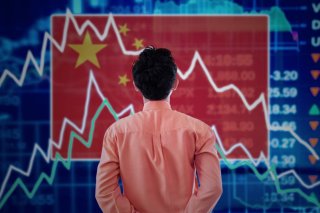China Is Not Ready for the Era of Deflation
Western countries’ ‘de-risking’ policies towards China and China’s own ‘anti-spy’ policies will likely lead to a continuous deterioration in China’s exports and foreign investment for a long time to come.
China’s economy has been hit by a series of bad news. Data released by the National Bureau of Statistics of China indicated a year-on-year decrease of 0.3 per cent in the Consumer Price Index (CPI) for July 2023 and a year-on-year decrease of 4.4 per cent in the Producer Price Index (PPI). This marked the first simultaneous annualised decline in China’s CPI and PPI since November 2020.
Economic data shows that indicators for consumer spending, industrial production and public and private investments in July 2023 were all significantly lower than expected. Credit growth weakened, exports declined and the People’s Bank of China unexpectedly lowered several key interest rates — including the medium-term lending facility (MLF) — for the second time in three months. But Chinese officials continue to deny deflation risks. Fu Linghui, spokesperson for the National Bureau of Statistics of China, stated at a press conference that ‘there is currently no deflation in China, and deflation will not occur in coming months’.
But in contrast to the official conclusion, China has entered a period of deflation.
Deflation is a sustained decrease in the overall price level of goods and services in an economy. In July 2023, China’s CPI decreased by 0.3 per cent compared to the same period last year, marking the first decline since February 2021. China’s PPI has been declining for 10 consecutive months, with a year-on-year drop of 4.4 per cent in July 2023.
The microeconomic indicators of industrial value-added output and profits of large industrial enterprises have diverged significantly since 2019. In 2019, industrial profits dropped by 3.3 per cent. In 2023, the year-on-year decline in industrial profits every month has been over 20 per cent, clearly indicating a decrease in the prices of industrial goods since 2019.
Deflation has occurred especially in China’s industrial sector. This has triggered many closures among private enterprises in the Yangtze River Delta and the Pearl River Delta, shaking China’s position as the world’s factory.
In 2022, China’s labour productivity decreased by 4.8 per cent. China’s monetary supply has reached 2.5 times its GDP, while its MLF rate is still decreasing. The most likely reason for this is insufficient aggregate demand, as consumption, investment and net exports have been all significantly lower than expected.
The deflation caused by insufficient aggregate demand is a serious concern for China, as it can lead to a downward spiral of economic activity. Deflation can lead to a vicious cycle where reduced consumption suppresses economic growth. Businesses might lower production and investment due to uncertain future demand, leading to increased unemployment. This further reduces overall consumption, creating a self-reinforcing loop. In a deflationary environment, any monetary policies initiated by the People’s Bank of China may become ineffective, making it difficult to further stimulate the economy.
Deflation can lead to slowed economic growth, increased unemployment and can exacerbate already worsening provincial government debt problems.
In China, these predictions are becoming a reality. From January to July 2023, the total profits of industrial enterprises reported a year-on-year decrease of 15.5 per cent. The Manufacturing Purchasing Managers’ Index has been below 50 since April 2023, indicating that the entire manufacturing sector is in a state of contraction. The youth unemployment rate reached 21.3 per cent in June 2023, after which the government decided to no longer disclose this figure. Local government debt, including that of urban investment companies, has reached 100 trillion yuan (US$13 trillion). With the economic slowdown, the risk of default has increased.
Deflation has also changed consumer expectations. Government policies aimed at stimulating the real estate market have had a lukewarm response because potential buyers expect prices to continue falling. Ordinary households are shifting from use of the e-commerce site Taobao to Pinduoduo because Pinduoduo’s product prices are low.
The reasons for deflation in China are more complex than in countries like Japan, and the consequences could be more dire. Japan’s deflation is mainly caused by insufficient consumption due to an ageing population. In China, besides ageing, there are institutional issues.
China has the second-highest number of billionaires globally, but also has over 600 million people with daily incomes of less than US$5. For middle and high-income citizens, China’s healthcare systems are not well-established — a major illness could plunge a family into poverty, and there have been reports of misappropriation of healthcare and pension funds. Most citizens are hesitant to spend as a consequence.
On the investment side, there has been a continuous crackdown on private enterprises under the current leadership, such as New Oriental, DiDi Chuxing, Alibaba and other IT platforms, resulting in a chilling effect. Private sectors are reluctant to invest despite low-interest rates. The marginal effects of public investment are steadily decreasing.
Western countries’ ‘de-risking’ policies towards China and China’s own ‘anti-spy’ policies will likely lead to a continuous deterioration in China’s exports and foreign investment for a long time to come. China is experiencing deflation, which will persist for the foreseeable future. The Chinese government must urgently address the institutional obstacles that have led to deflation.
He-Ling Shi is Associate Professor in the Department of Economics at Monash University.
This article was first published by the East Asia Forum.
Image: Shutterstock.

